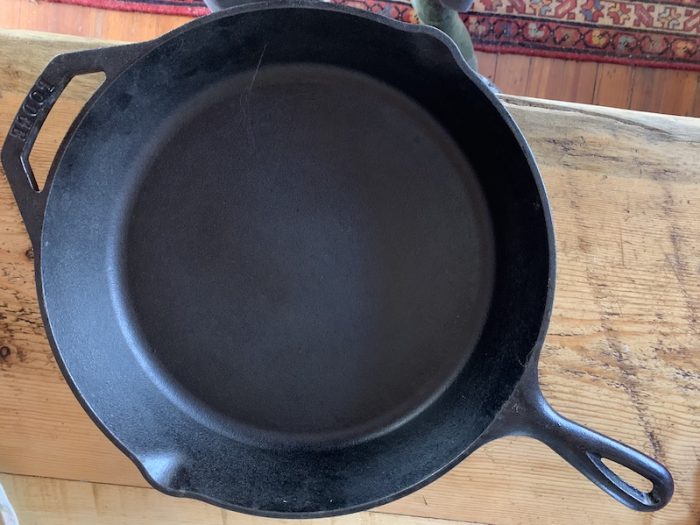Popeye.
He just should have eaten fresh spinach instead of canned.
It’s a great source of iron, which increases the health of your blood, especially red blood cells. Red blood cells in turn feed your muscles, among many other things, and in turn, gives you energy and strength.
The absorbed iron is transported as plasma ferritin and stored in liver, spleen, bone marrow and kidney. When red cells are broken down, the liberated iron is reutilized in the formation of new red cells. Iron is necessary for oxygen transport and cell growth by helping the blood transport oxygen from the lungs to the tissue cells where it is needed.
Are you getting enough iron?
Iron deficiency symptoms include: Pale skin & nail beds, fatigue, irritability, dizziness, weakness, shortness of breath, sore tongue and mouth, light headed, brittle nails, decreased appetite (especially in children), headache, weakness. Other symptoms include heartburn, gas, vague abdominal pains, numbness and tingling in the extremities, heart palpitation, and sores at the corners of the mouth.
What causes the malabsorption of iron?
Deficient Vitamin C, because Vitamin C aides in iron absorption, so being deficient. In men and postmenopausal women, anemia is usually due to blood loss associated with ulcers, the use of aspirin or non-steroidal anti-inflammatory medications (NSAIDS), or colon cancer.
Iron is mostly absorbed from duodenum (part of the intestines) and upper small intestine. So if you have any digestive issues or food sensitivities, you could be at risk for anemia.
Phytate, which is found in some whole grains and legumes, can limit iron absorption. Soy, which is a good vegetarian source of iron, contains phytate and certain proteins that interfere with iron absorption. Other foods that obstruct iron absorption include coffee, tea (including some herbal), cocoa, calcium, fiber and some spices.
Some iron loss occurs naturally. The total daily iron loss of an adult is about 1 mg and about 2 mg in menstruating women.
Daily Requirements of Iron
Children, men and women according to age have different nutritional needs. Please see chart below for guidelines.
Children
7 mos – 1 yr 11 mg 1 yr – 4 yrs 7 mg
4 yrs – 8 yrs 10 mg 9 yrs – 13 yrs 8 mg
Men
14 yrs – 18 yrs 11 mg 19 yrs + 8 mg
Women
14 yrs – 18 yrs 15 mg Pregnant 27 mg
19 yrs – 50 yrs 18 mg Lactating 14 yrs – 18 yrs 10 mg
51 + yrs 8 mg 19 + yrs 9 mg
Sources of Iron
Food Iron in mg Food Iron in mg
Black beans 7.9 Tofu 4.6
Garbanzos 6.9 Lima beans 4.5
Pintos 6.1 Lentils 6.6
Navy 5.1 Split peas 3.4
Soybeans
Kidney 8.8
5.2 Fresh peas
Tempeh 2.9
2.2
Vegetables (1 cup cooked)
Spinach 6.4 Kale 1.8
Beet greens 2.8 Acorn squash 1.7
Swiss chard 4.0 Brussels sprouts 1.7
Tomato juice 2.2 Potato w/skin 1.4
Butternut squash 2.1 Beets 1.0
Fruit
Prune juice (1 cup) 10.5 Dates, 10 2.4
Dried peach halves, 5 3.9 Prunes 1.8
Raisins, ½ cup 2.6 Strawberries, 1 cup 1.5
Grains (¼ cup dry)
Rice bran 10.8 Wheat bran/germ 1.9
Quinoa 4.6 Cream of wheat 8.1
Millet 3.9 Oat or cornmeal 0.7
Seeds (¼ cup)
Pumpkin seeds 4.0 Sunflower seeds 2.4
Miscellaneous
Blackstrap molasses 3.2 Brewer’s yeast, 1 tablespoons 1.4
Tahini 2 tbsp 2.7 Cashews ¼ cup 2.0
So next time your at the farmers market, pick up some some kale and spinach and add them to your black bean chili or next soup. Not only will it taste great, but you’ll feel more energized.
Live natural. Live well.
Heather












Read 0 comments and reply